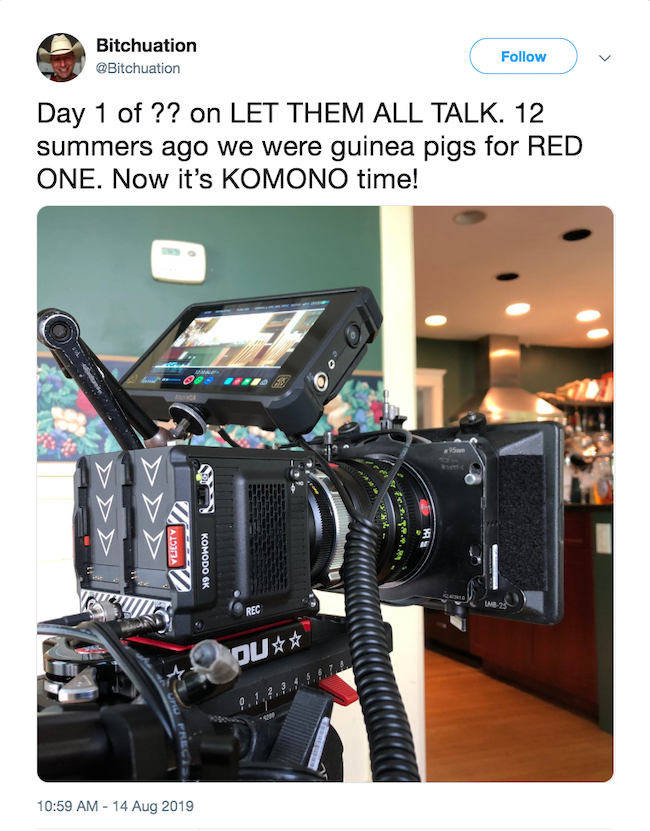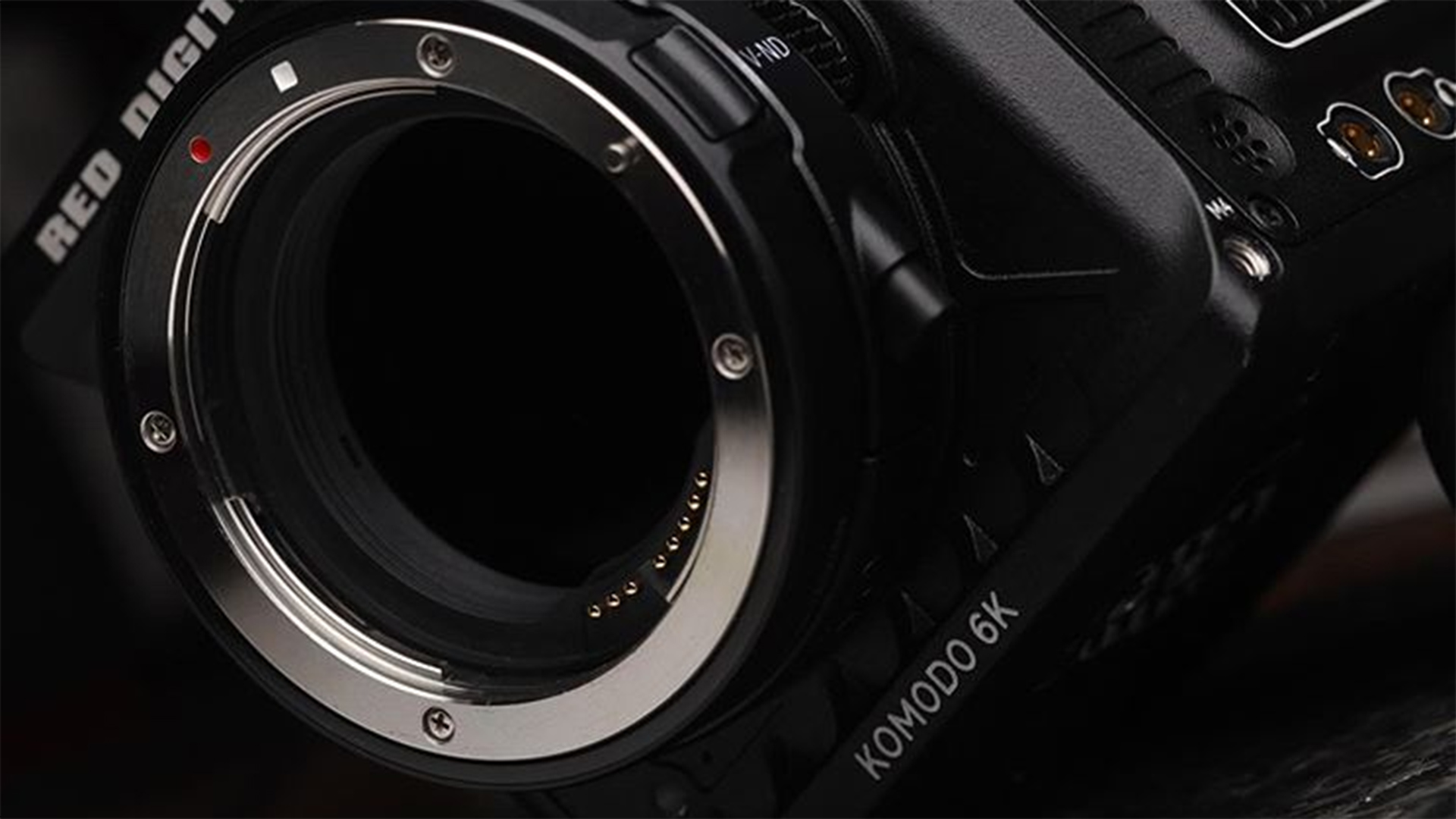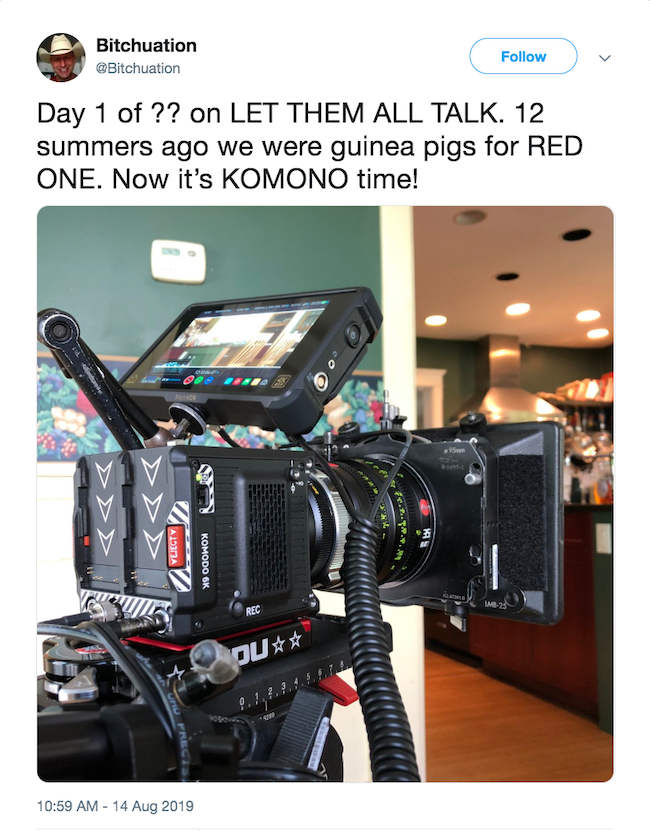

There's been a lot of buzz surrounding RED's new and mysterious new Komodo camera. We take a closer a look to find out what it is, and what it isn't, as well as what it might mean for the industry as a whole.
On July 27th 2019, RED President Jarred Land teased the first specs of their new Komodo camera:
- It is not DSMC3
- It is not a replacement for DSMC2
- It is not 8k VV
- It is not a Dragon or a Helium or a Gemini or a Monstro Sensor
- It does not have an HDMI port
- It does not use proprietary media
- It is not a “module”
- It is not under $5k, unless you own a Hydrogen.
- It has no XLR ports
- It does not have a fixed lens
- It’s body does not weight more than 2 pounds.
- It is not larger than 4 inches in any dimension.
It was a typically RED announcement - shrouded in mystery, pregnant with possibility, and laden with unanswered questions. As with previous RED teases, Komodo also speaks volumes about where RED thinks the industry is going. And that alone makes it interesting. What if Komodo is a bellwether of where the film industry is going?
Lets explore shall we?
First of all, the name. A Komodo is a small dragon. This is fueling rumors that the 6K sensor in this tiny camera is similar in pixel size to Dragon: 30.7 x 15.8mm. Noted RED expert Phil Holland speculated on Reduser that this brand new sensor may draw less heat and power, which makes sense, given how small the Komodo body is, and that it may be powered by Canon's svelt BP-970G batteries.
A tease from Steven Soderbergh gives us another view of the Komodo, and shows it paired with a Leica Super 35 cine lens, yet another hint the sensor is in the S35/S35+ range:

Steven Soderbergh might have mistaken RED's new camera for a traditional Japanese gown, but at least we can now see the camera in the wild!
But what does Komodo say about the future of cine cameras? We know already sensors are getting bigger. From Monstro, to Alexa LF, to Venice - the high end cine market is flooded with Vista options. But RED is now clearly betting on high-end cinema cameras getting way smaller too.
At 2lbs in weight, and per Mr Land "not larger than 4 inches in any dimension", Komodo is truly a micro cinema camera. It's not the first to market - Black Magic has had their Pocket line for years, and Z cameras are creating buzz. But RED is the first premium Hollywood brand to step into this market, which means it won't be the last. An Alexa Mini Macro no longer seems far fetched, does it?
Variable ND
RED also is clearly banking on a mirrorless future. Designed around a Canon RF mount, the Komodo is out of the box easily adaptable to every major mount used on sets: EF, PL, LPL, Nikon, etc. Jarred's photo (at the top of this article) teases Variable ND - another feature becoming standard on cine cameras.
Even more striking, RED also appears to be embracing a new consumer. Unlike RED's previous cameras that featured proprietary media and monitoring, Komodo records to CFAST cards and is teased with an Atomos monitor. RED has flirted with budget cinema cameras before (Raven, Scarlet-W, Scarlet-X, etc) but these were $15-20K packages once you factored media. Komodo? It may be less than $10K for a whole kit. The C300 and FS7 market is clearly in RED's sights.
What does this say about the future of our industry, and how we shoot? At a glance, cine cameras appear to be competing in two categories now - high end cameras with large sensors and lofty price tags. And now a medium tier right below with smaller bodies, more affordable pricing, but still cine-grade imaging. The insatiable thirst for high-end content is clearly giving consumers the advantage - they want the best, and they are getting it, at prices that would have been unimaginable 5 years ago.
But Komodo also says a lot about the risks of the high-end camera market, and hints at RED's broader strategy. The high-end market is definitely more competitive than ever. The Mini LF and Sony Venice are growing in popularity, and even the RED-driven Panavision DXL has it's fan base. Also Arri's new Super35 sensor looms on the horizon next year.
In this climate, it makes sense RED may be looking to spread it's risk, and tap into a new, surging market. The risks are many. Depending on its price, Komodo could be the hit RED are looking for, putting enormous pressure on their supply chains and servicing. Komodo's features may also alienate some of their passionate, high-end clientele that are used to spending much more, for similar features.
However Komodo is also quintessentially RED. Since the launch of the RED One in 2007, RED's goal has always been to offer high-end cinema cameras to as many filmmakers as possible. While we don't know all the specs of Komodo yet, we do know is this - this tiny 6K camera will achieve that goal in a way the RED One never could.
At $17,500, the RED One still targeted the high-end market (accustomed to spending 100k per camera at the time). But in today's content crazed world, RED knows the best place to find the new David Finchers, Rachel Morrisons, or Bradford Youngs isn't on movie sets, it's on the web and on a budget. And clearly RED wants these daring new filmmakers to express their visions with a tiny 6K Komodo in their hands.
As the saying goes - a rising tide lifts all boats. As Komodo ushers in a new era of affordable, compact, Hollywood pedigree cameras, this can only be good for all of us - whether you're a new filmmaker, or a weathered producer trying to stay ahead in these tumultuous times.
Tags: Production


Comments